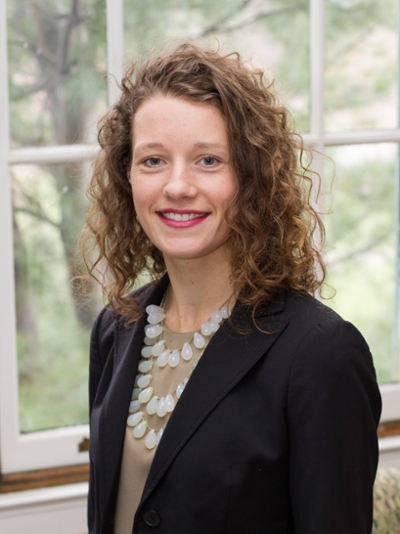
Creating a Water Management Plan in Costa Rica
Costa Rica, the “rich coast,” is known for its rainforests and agricultural exports including coffee and bananas. But an ongoing drought along the coast, climate change, and tourism growth are putting pressure on the country’s groundwater systems—the means by which most residents access fresh water. More wells are becoming saline and irrigation is a challenge for farmers.
PhD student Chelsea Kolb of Cloquet, Minnesota, recently returned from the city of Santa Cruz, located in the northern region of Costa Rica’s Nicoya Peninsula. She spent 10 months in the region working alongside a hydrologist to study water quality and aquifer levels along the coastline.
Kolb received a Fulbright U.S. Student Program fellowship award to support her research in Costa Rica.
“Even without my work, we knew there were effects on drinking water due to drought because many wells along the coast were already becoming saline,” Kolb states. She adds that she’s working to determine the relationship between air temperature and drought on water quality. “The extent of contamination depends on many factors—it’s this multidimensional relationship that we are trying to manage better.”
Kolb worked alongside hydrologist Andrea Suarez Serrano of the National University of Costa Rica, Liberia’s Center for Hydraulic Resources for Central America and the Caribbean. “Serrano was very helpful in the data gathering process and facilitating meetings with the Ministry of the Environment,” says Kolb. “We are now primarily focused on creating a model that we can use to predict outcomes given changes in climate.”
The Costa Rican government has positioned itself as an environmental steward, according to Kolb, adopting policies and practices to protect the environment and the country’s ecotourism industry. In response to a potential agricultural irrigation crisis, the government approved construction of a new aqueduct to transport water from the rainy mountainous region to the coast.
In addition to the government, Kolb worked with stakeholders including residents, farmers, universities, and environmental groups. “It was really interesting to learn about these different perspectives and try to keep them in mind while thinking about potential solutions to this problem,” she says. “It was one of the more challenging aspects of the project.”
Kolb mentions that she chose to work in Costa Rica because her CEE advisors, professors Jeanne VanBriesen, Matteo Pozzi, and Costa Samaras, had contacts within the country. “I knew that would be a great resource for me,” she says. “I reached out to the university research group to discuss the possibility of collaborating on a research project. We developed a research proposal that eventually lead to winning the Fulbright fellowship.”
While her work is ongoing, it fits into a larger project within Costa Rica’s Ministry of the Environment. “The Costa Rican government is implementing strategies to reduce the effects on aquifer salination,” adds Kolb. “As the project continues, we are looking at strategies related to improved permitting and monitoring processes, particularly with the real-time salinity sensors installed by the Ministry of the Environment.”
The Fulbright U.S. Student Program provides grants for individually designed study/research projects. During their projects, student researchers will meet, work with, live with, and learn from the people of the host country, sharing daily experiences in an atmosphere of openness, academic integrity, and intellectual freedom, thereby promoting mutual understanding.